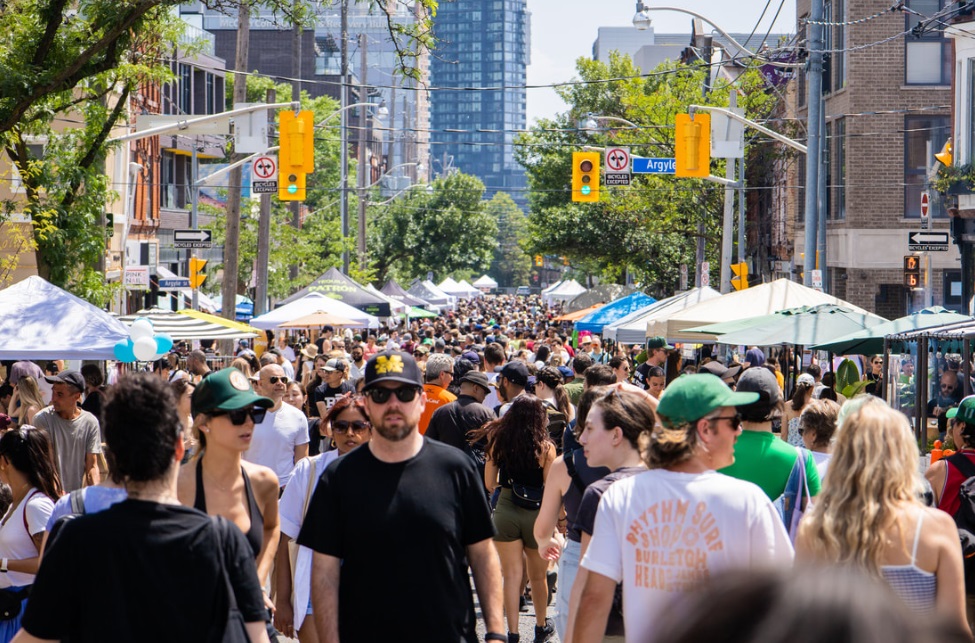Ford government could have sold rights to develop greenbelt for millions, experts say
Posted January 11, 2023 2:11 pm.
Last Updated January 12, 2023 10:20 am.
The Ontario government has faced intense scrutiny over the decision to open up parts of the Greenbelt for development, but the opposition parties are now calling for attention to the possibly millions of dollars going to private corporations rather than into the public purse.
Experts are calling this decision the biggest financial mismanagement of a public asset since the selloff of Highway 407.
One of the parcels of land, 4,950 acres in the Duffins Rouge Agricultural Preserve near Pickering, was sold for just a sliver of what it now worth.
Ontario owned the land until 2003 when the Harris government sold it to area farmers at agricultural prices, approximately $4,000 per acre.
The lead planner of the Greenbelt Plan, Victor Doyle, told CityNews developable land could now be worth up to $500,000 per acre.
“If Ontarians knew a future government was going to break the promise to protect these lands in perpetuity as agriculture and open them for development, which the province has stated is its clear objective/purpose, then the province could and should have held on to them and sold them for development purposes and accrued that value to the public purse,” Doyle said in an email.
Despite selling the land in 2003, experts told CityNews that Ontario still owned all the non-agricultural rights to the land, held in trust for the public. That’s the bulk of the value.
“They have vast monetary value and they were just given away by the government with the stroke of a pen,” said Phil Pothen, an Ontario Environment Program Manager with Environmental Defence. “They could’ve bought back the agricultural rights and sold it all as a package and the value to the taxpayers would’ve been huge.”
Alternatively, the government could have sold the development rights to the land, or put a price on releasing the protections and requiring the developer landowners to compensate Ontario for all or part of the vast increase in the value of the land.
But instead, Pothen said they essentially threw away a $2-billion asset.
“They could have put that money into public purse rather than the purse of those private landowners,” said Pothen.
Green Party Leader Mike Schreiner said, this is “financial mismanagement on a grand scale.”
“These lands were rightfully sold to famers at well below market prices because we knew we needed to protect that farmland to grow food for us forever and for the government to essentially take those protections away, it’s inexplicable,” Schreiner said.
“For them not to capture the value of this land, for the public, to the benefit of the public, and instead allowing a couple of land speculators to cash in at our expense is a dereliction of the premier’s duty to basic responsible financial management.”
“So you even step aside, even if you want to build houses there, there’s a huge question of why they did it in a way that throws away huge sums of public money,” added Pothen.
Pothen explains the bulk of the value of the land was still held by taxpayers because the government only had sold agricultural rights of the land, held in a trust for the public and the rest of it was protected by the Greenbelt.
“All of that value could have actually been given to the taxpayer if the government had simply expropriated the land before uploading it and then sold it back so they could have just bought back the agricultural rights and then sold it all as a packet,” Pothen said. “And the value to the taxpayer would have been huge.”
Housing Minister Steve Clark’s office tells CityNews the lands in question are privately owned and have been for many years.
“Expropriations of private property are a limited tool used in order to further government infrastructure projects like highways, schools and transit. The owners of these lands have already indicated their willingness to build much-needed housing on them,” read a statement from the minister’s spokesperson The government will not expropriate the privately-owned lands in question for the sole purpose of revenue generation.”
If expropriating the land wasn’t an option, there were other ways of capturing the value of the land, Doyle told CityNews, such as putting a price on releasing the protection act and requiring the developer landowners to compensate Ontario for all or part of the vast increase in the value of the land.
Alternatively, the province also could have mandated than an amount equivalent to all or part of the increased value be provided in the form of affordable housing on the lands, added Doyle. “It did neither but simply allowed the developer/owners to reap the entirety of the windfall.”
Pothen said this warrants some questions and “is a separate basis for exploring whether there was a criminal breach of trust of some sort.”
The OPP is currently reviewing appeals to see if there are grounds for an investigation. The requests reportedly come from environmental groups and members of the public.
Pothen adds there is no plausible case that this land is actually going to increase the supply of housing.
“It will take more labour, will take more resources overall, to create the same number of homes out in these locations than if they simply use the land that’s been unused for ages. They’re literally leapfrogging over huge areas of undeveloped land to these particular plots in the Greenbelt. It doesn’t make sense to a public interest point of view,” he explained.
Steven Farber, associate professor of geography at the University of Toronto Scarborough, said he believes it sets a really bad precedent about how we think about the Greenbelt.
“Is it a reserve of land that we’re keeping in our back pocket for any moment in time that the government decides that it’s time to develop it, or is it really a protected area that with all intents and purposes to keep it protected in perpetuity,” said Farber.
Farber also agrees that there’s no evidence that this land is needed to address the housing crisis in Ontario.
“We do have a housing crisis, both a supply crisis and an affordability crisis, but we don’t have a land supply crisis. There’s plenty of parcels ready to be redeveloped outside of the Greenbelt. Existing developed areas that are already well serviced by transportation, by sewers, by schools, convenience hospitals, and so on, that would be far more effective places and efficient places for the region to develop,” said Farber.
Farber told CityNews this land that has been reclaimed for development will only provide room for 50,000 new homes, which is less than five per cent of the estimated demand for new housing in the area.
“In my opinion, it’s not worth the potential destructive impact that will have in order to make room for 50,000 units, which could be developed in existing land slated for development.”








